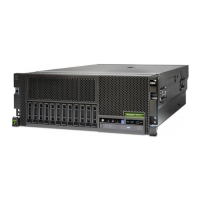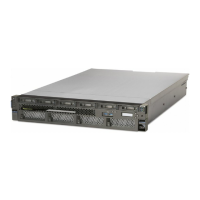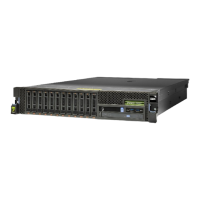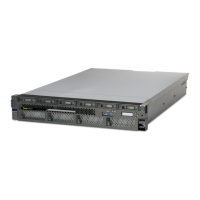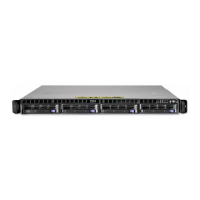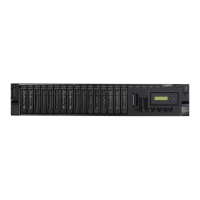d. Select System Cong > Time of Day.
e. Adjust the time of day.
f. Select Save Settings.
3. Control speculative execution by using the ASMI to address the "Spectre" and "Meltdown"
vulnerabilities.
To control speculative execution by using the ASMI to address the Spectre and Meltdown
vulnerabilities, complete the following steps:
a. In the ASMI interface, select System Conguration > Speculative Execution Control.
b. Choose the control option that you want to use. For more information about Speculative Execution
Control, see Protecting your POWER9 servers against the “Spectre” and “Meltdown”
vulnerabilities (http://www.ibm.com/support/knowledgecenter/POWER9//p9hby/
p9hby_speculative_execution_control.htm)
4. Check the rmware level on the managed system.
a. In the navigation area, click Updates.
b. In the contents area, select the managed system.
c. Select Actions > Updates > Change Licensed Internal Code > for the Current Release.
d. Select View system information and then click OK.
e. In the Specify LIC Repository window, select None - Display current values and then click OK.
f. Record the level that appears in the EC Number eld and the Activated Level eld. For example,
if the EC Number is 01EM310 and the Activated Level is 77, the rmware level is 01EM310_77.
5. Compare your installed rmware level with available rmware levels. If necessary, update your
rmware levels.
a. Compare your installed rmware level with available rmware levels. For more information, see
the Fix Central website
(http://www.ibm.com/support/xcentral) .
b. If necessary, update your managed system rmware levels. In the navigation area, select
Updates.
c. In the contents area, select your managed system.
d. Click Change Licensed Internal Code for the current release.
6. To power on a managed system, complete the following steps:
a. In the contents area, select the managed system.
b. Select Actions > View All Actions > Power Management.
c. Select the power on options that you want to use and click OK.
7. Congure and manage virtual resources. For instructions, see Getting started with PowerVM
®
(http://
www.ibm.com/support/knowledgecenter/POWER9/p9eew/p9eew_kickoff.htm).
8. Create partitions using templates.
• If you are creating new partitions, you can use the templates that are on your HMC. For more
information, see Accessing the template library (http://www.ibm.com/support/knowledgecenter/
POWER9/p9efc/p9efc_accessing_template_library.htm).
• If you have existing partitions on another system, you can capture those congurations, save it to
the template library and deploy the partition template. For more information, see Partition
templates (http://www.ibm.com/support/knowledgecenter/POWER9/p9efc/
p9efc_partition_template_concept.htm).
• If you want to use an existing template from another source, you can import that and use it. For
more information, see Importing a partition template (http://www.ibm.com/support/
knowledgecenter/POWER9/p9efc/p9efc_import_partition_template.htm).
9. If your system was preinstalled with an operating system, you must exit MDC (manufacturing default
conguration) mode so that you can open a console and access your operating system. To exit MDC
mode, complete the following steps:
Installing the IBM Power System E950 (9040-MR9)
31
